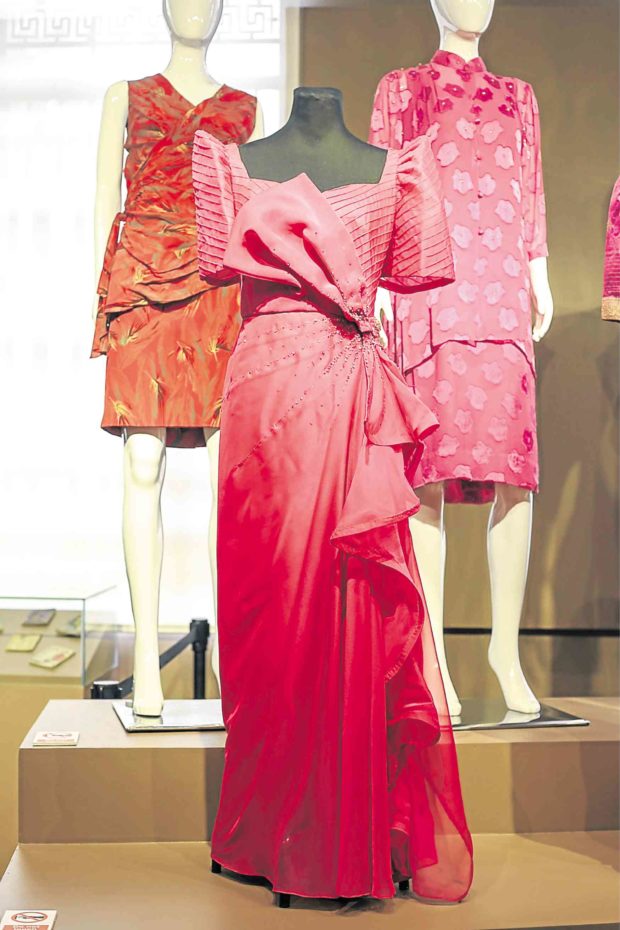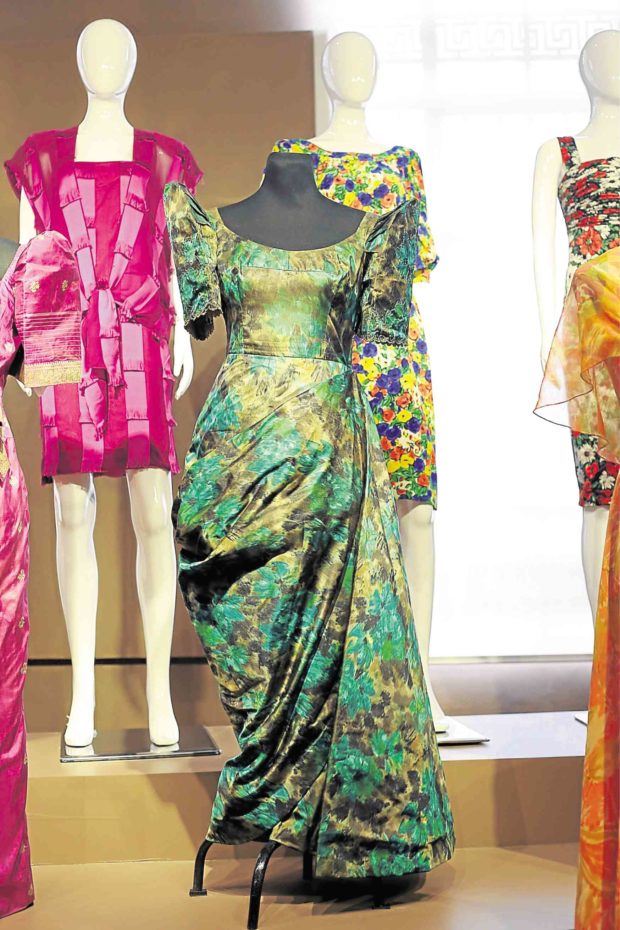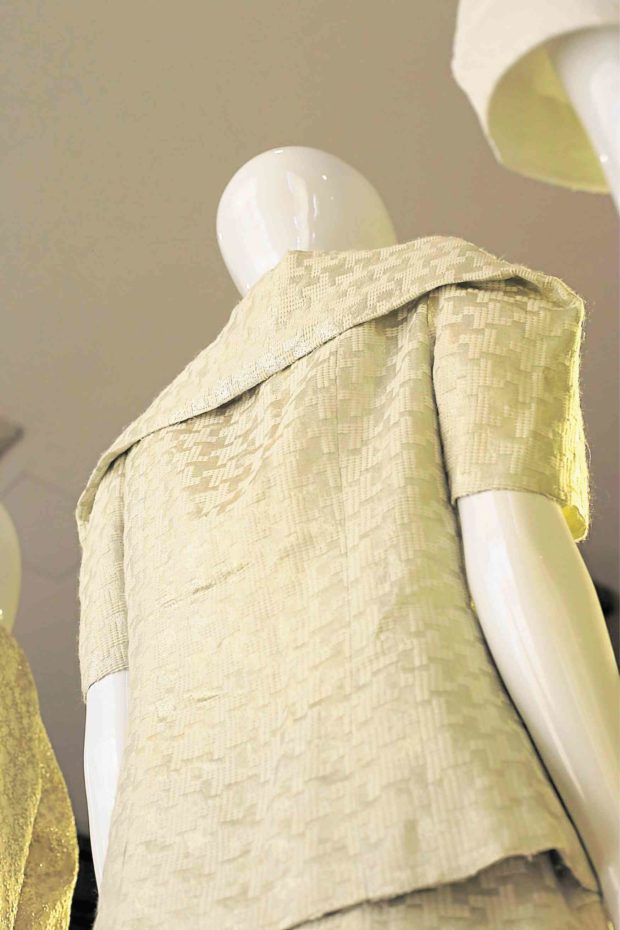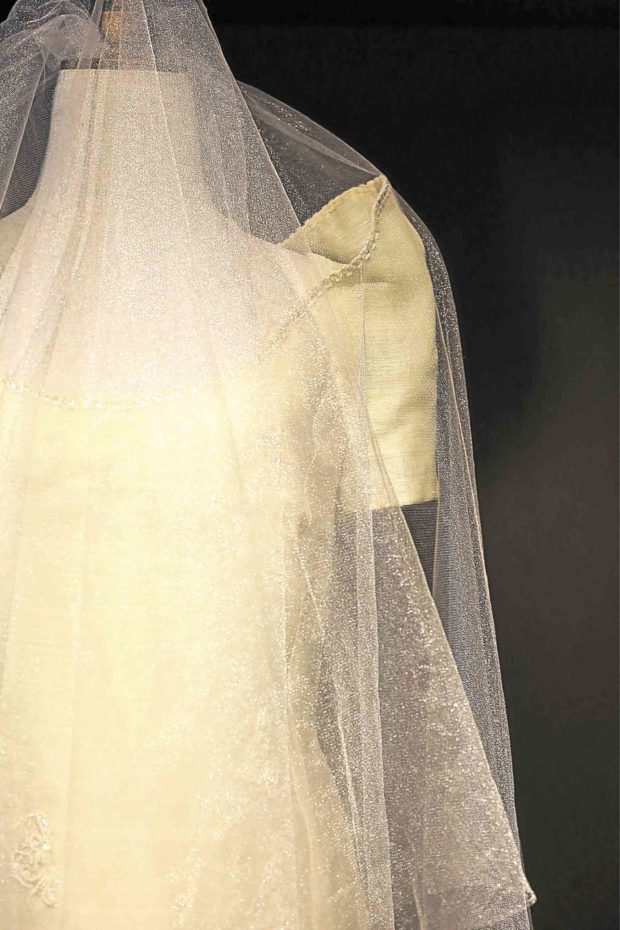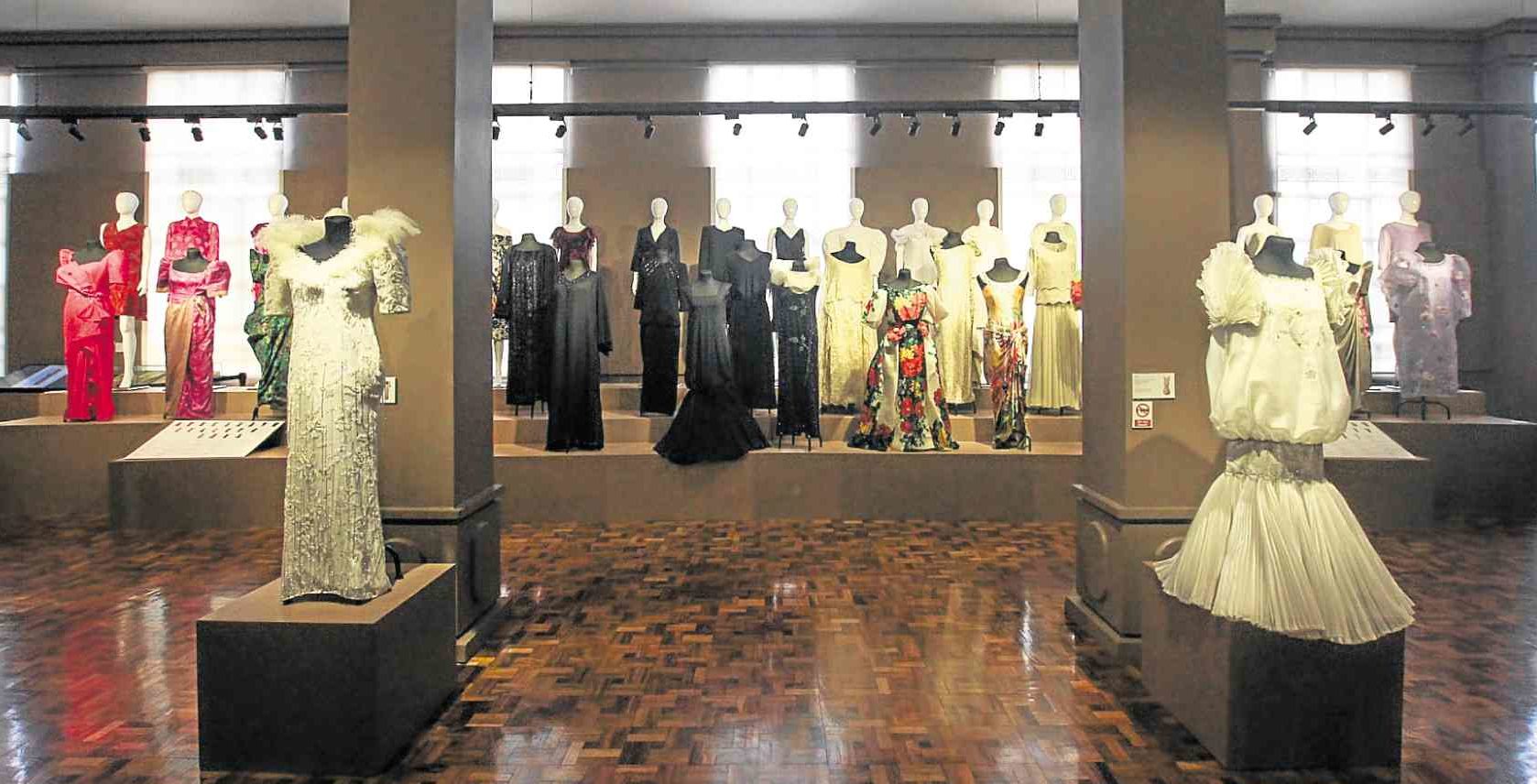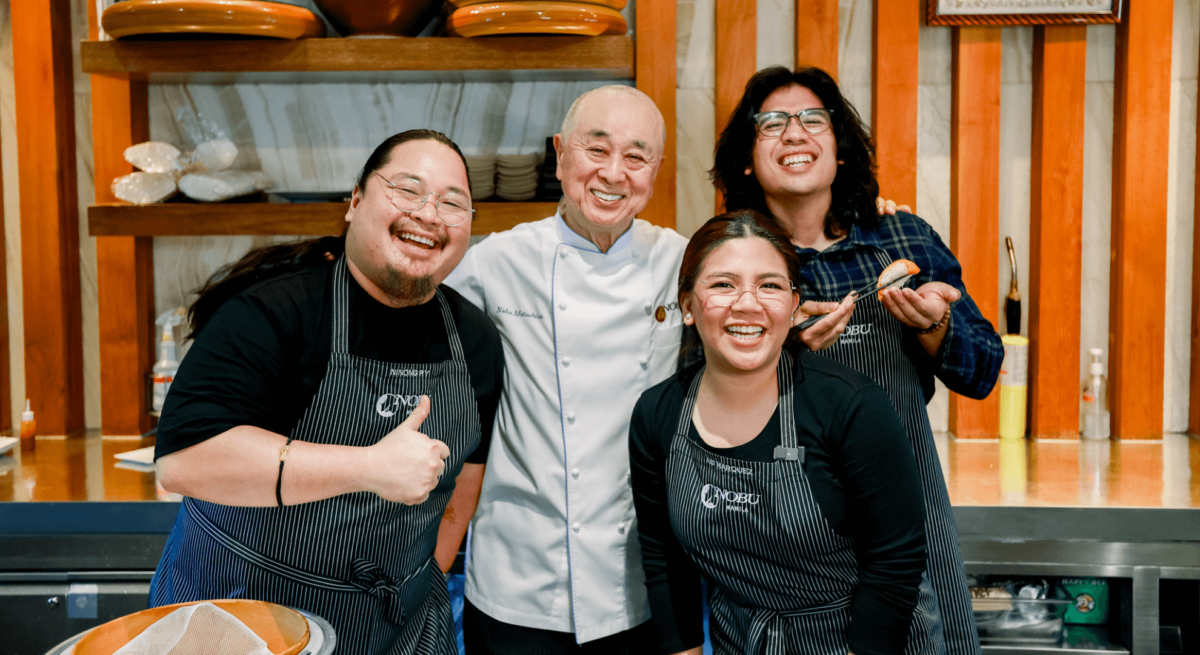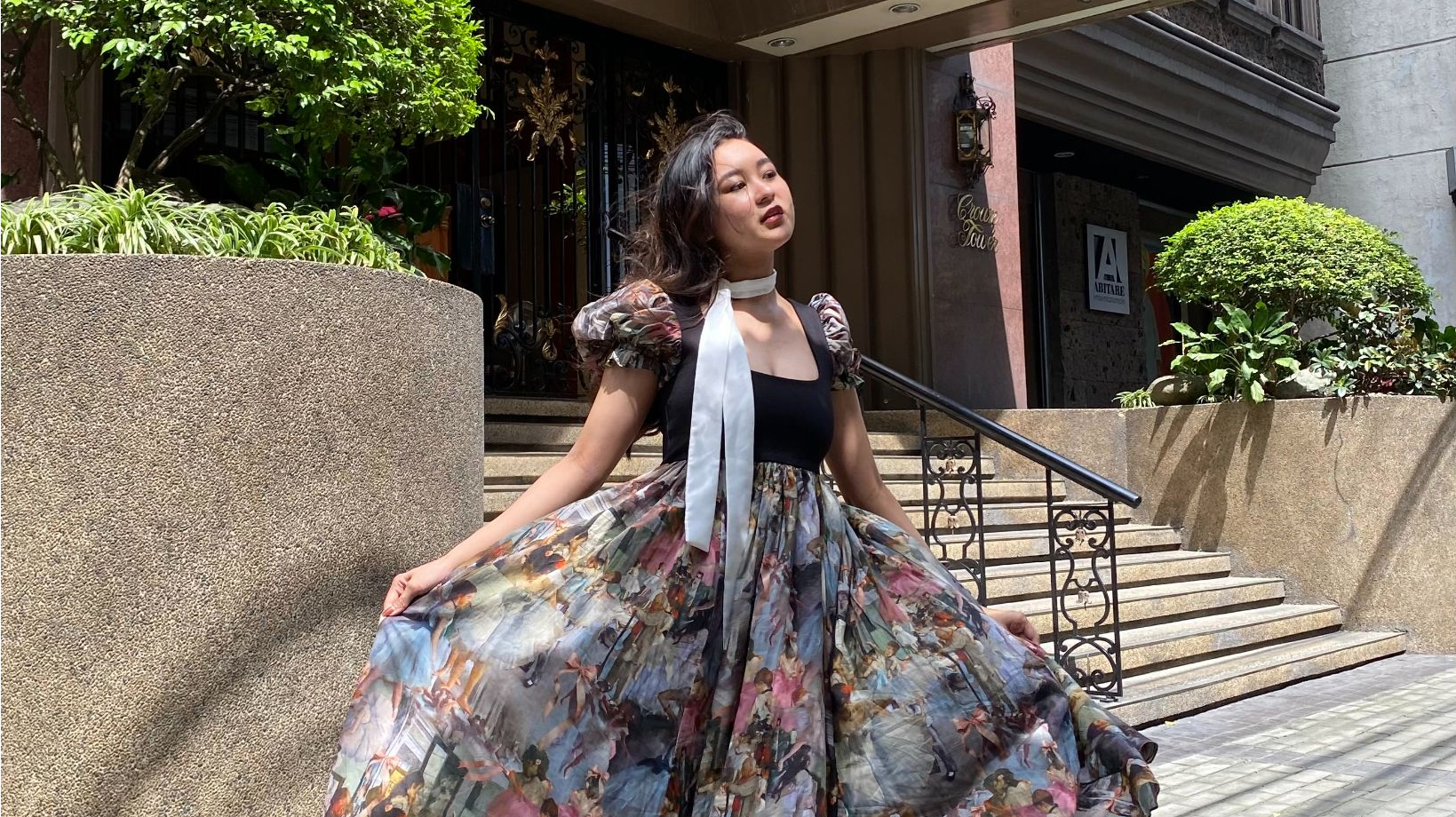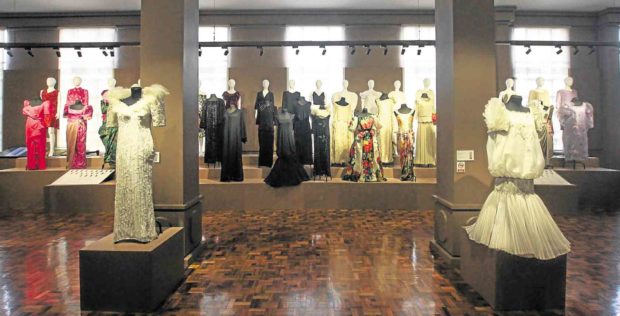
The name Froilan “Roy” Gonzales probably won’t ring a bell to many Insta-generation Filipinos pursuing a career in fashion. This is ironic, given that Gonzales is the only Filipino to have been head designer of a French couture house, and has had a career most youngsters could only dream of—and surely learn from.
Students of fashion and design have until June to get a glimpse of the Paris-trained Gonzales’ body of work, and those of his mother and grandmother, in the special exhibit called “R.T. Paras Haute Couture: 116 Years of Philippine Fashion,” at the National Museum of Fine Arts in Manila.
It’s the first-ever exhibit of the Paras-Gonzaleses.
Gonzales, 75, is a third-generation designer and couturier. He is continuing the legacy of his mother, Josefina “Inang” Tayag Gonzales, and grandmother, Roberta “Aling Belta” Tablante Paras, who established House of R.T. Paras in 1902 in Angeles, Pampanga.
The exhibit is Gonzales’ tribute to them—“a testimony to our shared histories and our link to the present,” he wrote in the show notes.
The 50-piece exhibit collection is on loan from clients, many of the pieces so old, even Gonzales couldn’t say if they were made by his mom or his lola.
“We relied on what they could loan us. But with the pieces from the late Meldy Cojuangco, I got to choose. Some I made, some were by my mom,” he said.
“We also borrowed from the Ramoses of National Book Store. We also have from the Aranetas and the Cojuangcos, all by my mom…”
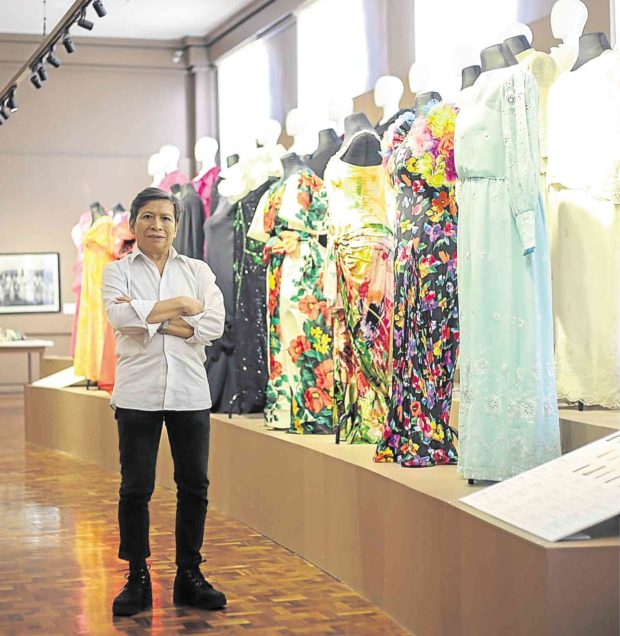
—PHOTOS BY EARVIN PERIAS
Only 19
Gonzales was only 19 in 1963 when his mother convinced him to go to Paris to study fashion at the Chambre Syndicale de la Couture Parisienne. Her hope was for her only child to continue the family business.
Instead of coming home, however, he accepted a position at Pierre Cardin—a choice that drove his mother to tears. (“She made peace with it eventually and was very proud. When I bought my own apartment, she told all the people and invited them to stay at my place!”)
Young and fickle, he left Cardin soon after and took a job in Rio de Janeiro, Brazil, in a fashion magazine, where he wrote a fashion column and designed a show collection. It was a flop.
He came home, but soon realized he missed Paris. He wrote Cardin and asked if he’d take him back.
It was literally at Cardin’s elbow that Gonzales learned the nitty-gritty of studio work. “Others found it a lowly task to be by his side, handing him scissors and pins, but I didn’t. That’s how I learned.”

Hard work
It was hard work, those years. “When I was at Cardin, I didn’t have weekends off. I worked every day. Kids today should know that fashion isn’t all glorious. It’s real work.”
By 1970, Gonzales was again feeling restless. “I felt stagnant,” he said. He left Cardin and did freelance work. Briefly, he also worked at Cerutti as assistant designer. “I tried ready-to-wear but my style was too couture. It wasn’t for me.”
All that time, he was sending design sketches to his mother, who took over the company in 1953 when Aling Belta died. Inang had moved the workshop from Avenida in Manila to Quezon Avenue, Quezon City, in 1957, where it still stands today.
In 1973, Gonzales was hired at Jean Patou, to assist its designer, Angelo Tarlazzi. When Tarlazzi left without notice in 1977, Gonzales was named creative director.
“I did four collections a year—two for couture and two for ready-to-wear,” he said. When we told him designers in the big fashion houses today create six to eight collections a year, he was mortified: “Too much! That’s terrible.”
His time at Patou, however, wasn’t all smooth sailing. His bosses were “very demanding. They took out styles they didn’t like. Everything had to be salable, which was stifling for a creative. Once, I mixed fuchsia with a light orange, and they didn’t like it. ‘Too shocking.’ The following year, Saint Laurent did it. I made a ‘black bride,’ they didn’t want it. Next year, Saint Laurent again made it. It was depressing! The press didn’t want me, since I was Filipino. It affected me. I couldn’t do what I wanted, so I left in 1982.”
(Christian Lacroix took his place at Jean Patou.)
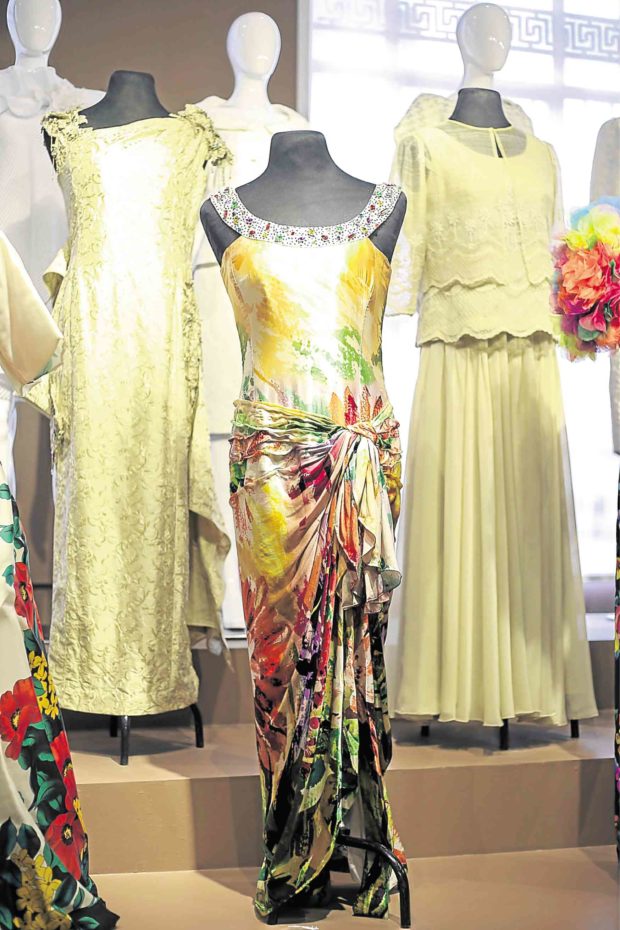
Homecoming
He worked in another company briefly before moving to Lecoanet Hemant, where he worked until deciding to come home for good in 1998, to care for his ailing mother.
“After Mom passed away in 2001, customers kept coming. We never closed. My plan was to travel back and forth, because I have an apartment in Paris.” He goes to Paris only in the spring, when Manila gets too humid.
“I didn’t need to retrain my mom’s staff because they were well trained. I just changed some things, taught them more techniques. I corrected some things that they did wrong,” he said. “I tried to do here what I did in Paris—all haute couture. We still hand-roll the seams. It’s not old-fashioned, that’s how it should be done. I also got used to not having certain materials here. I get by. I buy from Paris.”
His clients are the same affluent families his mom and lola made clothes for. And yet, he’s rarely seen in parties and big to-dos. He seldom does interviews and he has never done a show here. “I’m too shy,” he said.
Last month, he held a lecture in the exhibit hall at the National Museum. He had also taught master classes, in a school headed by Lulu Tan-Gan and Jojie Lloren. “I was a little shy because I’m not a teacher, so I asked them what they wanted to learn.”
In the exhibit, he pointed to a wedding gown with sleeves that looked like the butterfly sleeves of the terno. “That’s not a terno but a neckline I invented,” he said. “I learned the terno from my mom… Modernizing it is okay, especially for younger people.”
But worn with jeans or shorts? “I don’t know,” he said with a grimace. “I’m very classic. I follow style but not to the point where it’s unwearable.”
With no heirs, the House of R.T. Paras might die with Gonzales. “I don’t think of the future,” he said. “But as long as there’s work, why not? It’s the grace of God.”
